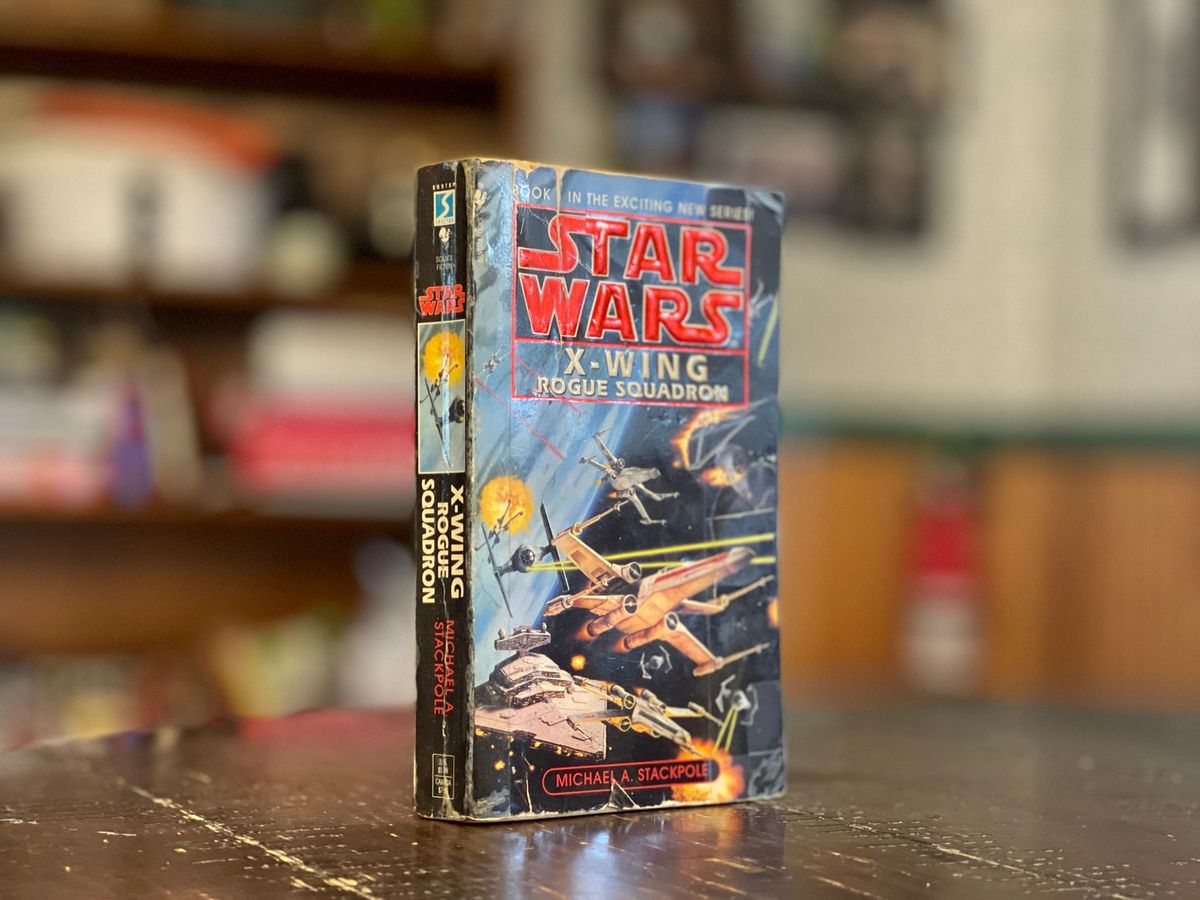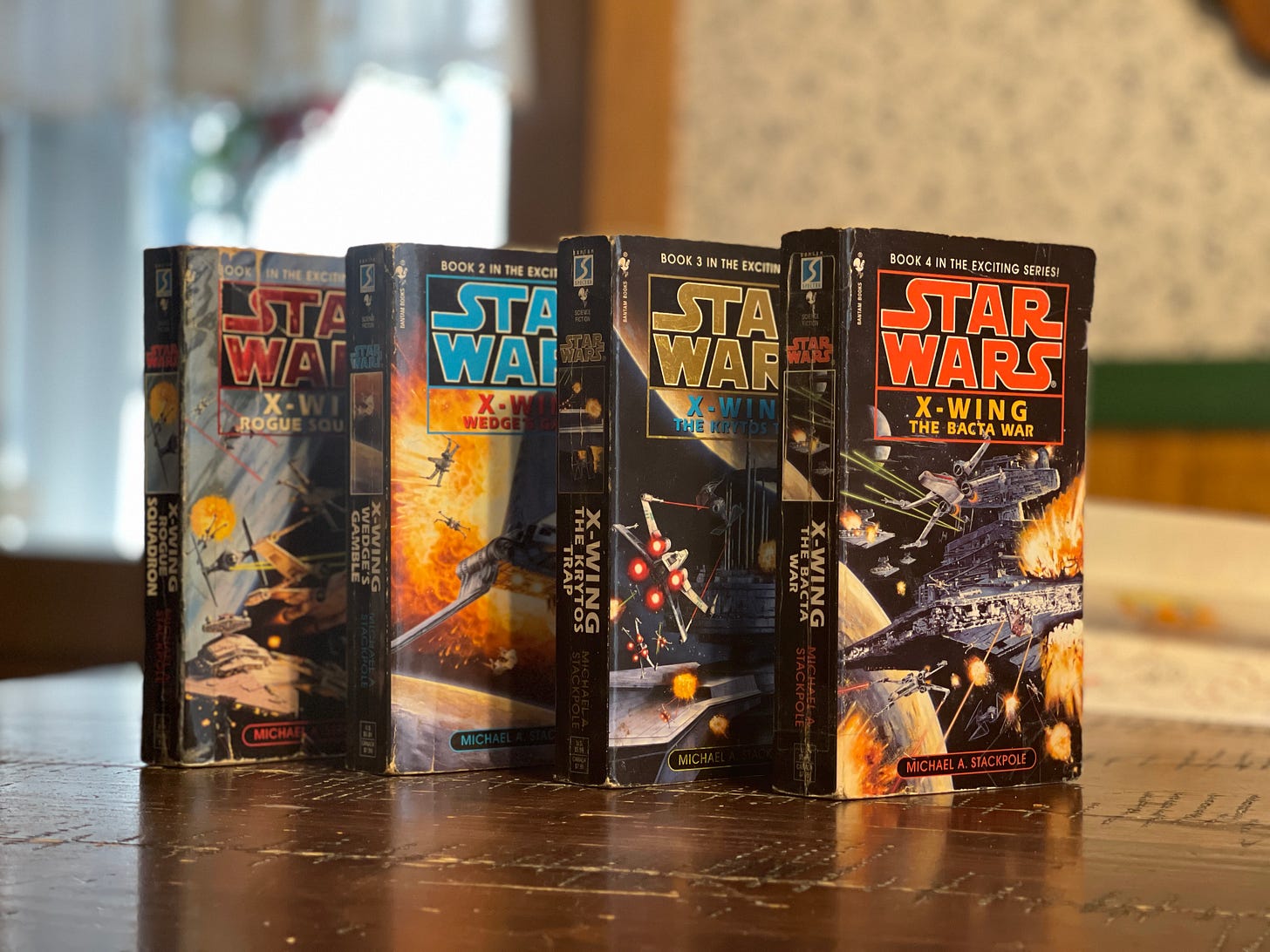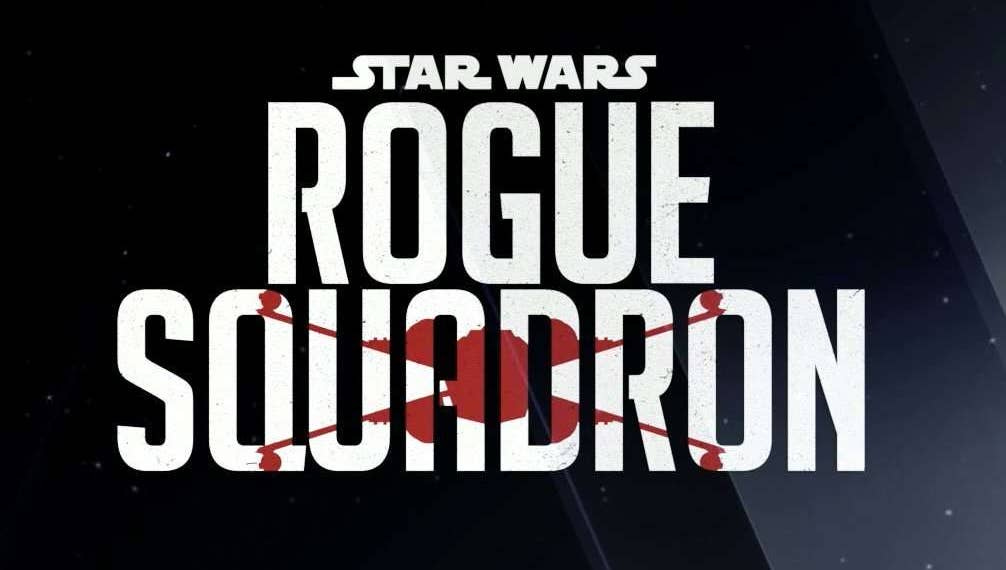Michael A. Stackpole's Rogue Squadron novels unlocked Star Wars' vast potential
Showing a bigger world beyond people named Luke, Leia, and Han

Last night was Disney’s big Investor Day, and in addition to all of the numbers (87 million subscribers, a small price hike, etc.), it devoted a considerable amount of time showing off to the public what it’s working on for the next couple of years.
It as an avalanche of new projects, with a ton of new Star Wars, Marvel, Pixar, Alien, and other various films and shows. There is a lot that’s coming, and a lot that I’m excited to see.
But there’s one project that literally made me gasp: Rogue Squadron.
We’re getting a Rogue Squadron movie. Not only that, but we’re getting a Rogue Squadron movie directed by Wonder Woman’s Patty Jenkins.
I found Star Wars when the special editions hit theaters in 1997, and was immediately hooked. Within a couple of years, I found my way to the Star Wars Expanded Universe, and devoured just about everything I could get my hands on — except for the X-Wing novels.
I’m not entirely sure what it was at first — maybe starting from the middle with Aaron Allston’s Iron Fist, or rolling my eyes at entries in the Star Wars Encyclopedia, but I just wasn’t interested in them until I’d read almost everything that had come out until that point (This would have been around 1999?)
But then I gave it another try, going back to the beginning of the series with Michael A. Stackpole’s Rogue Squadron. Any doubt that I had melted away with that book.
Up until that point, pretty much every Star Wars novel released to that point followed the franchises’s main characters: Luke, Han, Leia, Chewie, C-3P0, and R2-D2. Lando would pop in every now and again, as would the background, supporting characters like Mon Mothma, Admiral Ackbar, a random general or officer that popped up in that one scene, but it was pretty insular. Looking back, it’s one of the chief problems with the SWEU: the entire post-film franchise wasn’t able to really build out beyond the elements that made the films great, which diminishes pretty quickly. The adventures get old when the core trio save the Republic again.
Stackpole’s novels broke away with that formula.
While we do see the main cast pop up here and there — Leia, Luke and Han all make cameos — the most prominent Wedge Antilles, one of the pilots that we see throughout the franchise. But he was the lead, and around him was a brand new group of characters: Tycho Celchu, Ooryl Qrygg, Nwara Ven, Rhysati Ynr, Bror Jace, Erisi Dlarit, Peshk Vri’syk, Gavin Darklighter, Riv Shiel, Lujayne Forge, Andoorni Hui, and Corran Horn. That cast of characters would come and go, but it underscored the vast diversity of species that made up the Rebel Alliance, and a variety of different characters — hotshot pilots, tactical geniuses, anxious people trying to find their place in the unit.
The broad arc of the X-Wing novels also filled in a hole within the growing continuity: Timothy Zahn showed that the New Republic had recaptured most of the galaxy, and Stackpole (and later Allston’s Wraith Squadron novels) showed how that happened: through a number of ongoing battles that slowly and surely pushed against the remnants of the Empire.
What Stackpole did was inject the SWEU with a new subgenre: military science fiction, and in doing so, imparted a sense of realism that the franchise really needed. We see characters deal with some graspable issues: fuel, inter-unit rivalries, the durability of stormtrooper armor, and so forth. All of that goes back to the original feel of George Lucas’s Star Wars world — it’s something that you could touch and feel. Over the course of his five novels, Stackpole takes his characters through these sets of adventures, solving problems, tracking down notable Imperial officers, and getting into plenty of high-flying action.
Most of all, I fell hard for Corran Horn, Stackpole’s lead character in the series. He was a talented, dedicated, and principled pilot who rises up through the ranks and was an all-around cool guy. While I’ve loved the various characters in the franchise, I felt like Corran was the most relatable and aspirational. (Even if at times, he is a bit too good to be true, given that he’s a space cop, ace fighter pilot, and Jedi Master.)
They were just the books I needed, especially as I’d been branching out from Star Wars and into the works of Isaac Asimov, Arthur C. Clarke, and Frank Herbert. They gave the franchise a new, realistic edge and attitude that few other books in the franchise have fully realized (Karen Traviss’s Republic Commando books are another example.) That’s something that the franchise has needed: something that goes beyond black-and-white / good-verses-evil that most of it can easily be reduced down to. Rogue Squadron and its followups helped the franchise grow up and tell serious stories about honor, conflict, and the cost of war.

The X-Wing series also amounted to an interesting publishing experiment when Lucasfilm first launched it in the mid-1990s. In 1993, it had released starfighter simulator X-Wing, allowing players to plop down into the cockpit of an X-Wing fighter, and play through some of the events of A New Hope. It followed it up with a handful of other games: TIE Fighter, X-Wing vs. TIE Fighter, and X-Wing Alliance.
To support those works, Lucasfilm and Bantam Spectra began to think about providing a novelization of the games, utilizing their corporate synergy to coordinate a bigger project. Bantam approached Stackpole, knowing that he had worked on military science fiction and tie-in fiction before. Initially, he was skeptical, telling me a couple of years ago that “Back in 1995, computer games weren’t big enough to support novels.”
Learning that they wanted to talk about Star Wars, however, changed his mind. He went to Skywalker Ranch to attend some planning meetings, and learned that they were interested in releasing comics as well. Given that he’d been contracted to write a couple of novels, bringing him on as a writer for the comics would allow everyone to coordinate the entire project more easily.
Using the games as a way to get a feel for the battles, he plotted out the series, using Wedge Antilles as a focal point for fans. In 1995, the first comics hit stands, following Rogue Squadron shortly after the events of the Battle of Endor as they worked to take down the Empire. The novels followed, with Rogue Squadron, Wedge’s Gamble, The Krytos Trap, and Bacta War hitting stores in 1996 and 1997.
The entire project was immediately successful, hitting the bestseller list, and prompted Bantam Spectra to bring on Aaron Allston to write his three-book Wraith Squadron arc, with a new group of special forces pilots. Stackpole later returned for another installment, Isard’s Revenge in 1999. The series largely came to an end, although Allston would later return for a new X-Wing novel, Mercy Kill.
X-Wing did a couple of things that were pretty innovative at the time, and it’s something that Star Wars has become pretty well-known for: multi-platform stories that stretched across games, novels, comics, and occasionally, action figures, TV shows, cartoons, feature films, and more. Shadows of the Empire was one such project along with X-Wing, and major arcs like The New Jedi Order, The Clone Wars, and most recently, The High Republic, have followed. Indeed, jettisoning the SWEU a couple of years ago has led to a more interconnected franchise — I’ve written before about how shows like The Mandalorian have really embraced this. We’ve seen explicit ties and references to books like Chuck Wendig’s Aftermath and to games like Battlefront 2, and to other films in the franchise, like Solo and Rogue One.

I’ve been beating the drum for a Rogue Squadron project for quite a while now, and just about every time that I hear or see something about a new project, I’ve always had the thought run through my head: they really need to make a Rogue Squadron series/movie/etc.
And before we get ahead of ourselves: outside of the title, there’s no indication that Jenkins’ film will be an adaptation of Stackpole’s Rogue Squadron. There’s no guarantee that the movie will actually hit theaters in 2023 — there’s been plenty of churn when it comes to directors, who’ve found that their vision for Star Wars doesn’t line up with LFL’s expectations. So it goes.
But, Jenkins has been through this dance before: she previously worked on Thor 2, only to drop because of creative differences (so her eyes are most certainly open going into this), and most recently, Wonder Woman and Wonder Woman 1984. She knows franchise work, and I’m guessing that Lucasfilm is being really careful about how they select directors for projects now.
As I noted on Twitter, my only expectation here is that we’re going to get a Star Wars combat movie — hopefully along the lines of what we saw at the end of Rogue One. Those elements are frequently the highlights of any Star Wars movie, and it seems like Jenkins has been looking for this sort of film for ages (she almost did a Chuck Yeager biopic), and might be the right person for the job here. Anything else is just icing on top of the cake.
But. Rogue Squadron as a unit has a fervent following amongst Star Wars fans, and she acknowledged Stackpole’s contributions in a tweet shortly after her announcement:
I hope we make you proud. Thank you for your inspiring work. #RogueSquadron #StarWars @Lucasfilm_Ltd ❤️ https://t.co/RFEVx9khYP
— Patty Jenkins (@PattyJenks) December 11, 2020
Lucasfilm has a team of people who are dedicated to continuity and managing all of the characters, worlds, and story elements, and they’ll be well-familiar with Stackpole and Allston’s work, even if it’s no longer canon. We’ve seen Lucasfilm recycle ideas from the SWEU into the new canon, like Grand Admiral Thrawn, where it makes sense to do so, and I can’t imagine that they’re going to stand up a project like Rogue Squadron with at least acknowledging the works that have already come before.
We don’t know much about the film at the moment, other than the description that Kennedy gave out:
“The story will introduce a new generation of starfighter pilots as they earn their wings and risk their lives in a boundary-pushing, high-speed thrill-ride, and move the saga into the future era of the galaxy.
That sounds a lot like the plot of Rogue Squadron. I’m also guessing, based on the logo and Jenkins’ short video that this is a Rebellion/New Republic-set piece. The profile for the sequel trilogy changes (those engines aren’t cut in half.)
When LFL brought back Thrawn, they also brought in Timothy Zahn to write a novel about the character, and it’s a book that felt very much like it could be part of the original continuity. Stackpole’s novels feel that way as well: that they could easily be ported over, with a couple of minor tweaks. The gap between The Return of the Jedi and The Force Awakens is pretty open, and we’ve already seen some projects that touch on similar territory, like this year’s Star Wars Squadrons and Alexander Freed’s Alphabet Squadron novels. Slipping in Rogue Squadron with some familiar faces (like Corran Horn or Tycho Celchu) feels extremely doable. (If anything, I *really* want to put together a Corran Horn costume.)
Over the weekend, Jenkins provided a little bit of a hint to IGN about their approach:
“[In the Star Wars: Rogue Squadron movie] we're doing something original with great influence from the games and the books,” Jenkins told IGN in an interview. “There's a lot of things being acknowledged and understood about the greatness of all of those things, but yes, it's an original story and I'm so psyched to do it."
So: not a direct adaptation (as expected), but as to what they’ll be incorporating from those original stories? We’ll find out in a couple of years.
Star Wars is one of those franchises that are a genre unto themselves: there’s something for everyone, whether it’s epic space opera, military science fiction, sci-fi Western, and more. There’s a ton of untapped potential for a really excellent war film here, and I think that Rogue Squadron is the perfect way into that.
Stackpole and Allston’s books led the way here. They were books that really demonstrated the power of breaking away from the Skywalker family and going out to explore the rest of what the Galaxy Far, Far Away had to offer. Hopefully, Jenkins’ film will live up to that potential.
That’s all for this week. I’d planned to do up a regular roundup newsletter for y’all, but it’s been a busy week. I’m going to get away from the computer for the next day or two and recharge, but it’ll be out soon.
Rogue Nine, out.
Andrew